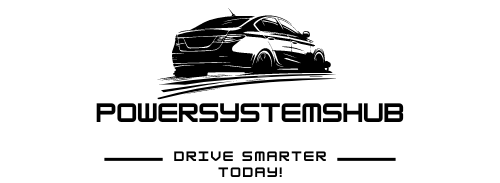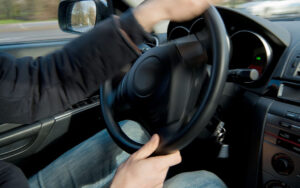How does it feel to be behind a wheel when it pulls to the left, right, or towards the back while driving? This is a very scary feeling simply because every journey is treated like a walk on a tightrope. It doesn’t matter if you are stuck in the centre of a busy city or enjoying yourself on the road; such a vehicle pulling in only one direction is not only inconvenient—it can be dangerous too.
But don’t panic! This common issue has more than one reason behind it and more than a few simple remedies. In this article, we will advise you on every step of the way in order to gain back the comfort of driving your vehicle. Most people are oblivious to the eventualities that make the car behave in an unwanted way; have you ever dealt with one that was not smooth?
Identifying the Cause of Pulling:
A pull right or left could only mean one thing: that some part of the car is damaged. Therefore, it can be quite worrying. The first point to consider is understanding that this type of problem does not happen for no apparent reason. Getting to the bottom of the issue is, of course, very important. Firstly, check how such a vehicle behaves on different surfaces. Does it pull more on the asphalt road compared to the off-road incidents? This detail will help determine whether it is a simple tyre issue or some other misalignment within the suspension.
The following is that a visual inspection for specific signs of wear or damage should be carried out. The cause of uneven tyre treads may be misalignment of the car or depreciation of the inflation pressures. The changes that were made recently to the car should be taken into account. New tyres or new storm suspension elements might too cause the pulling phenomenon if poorly fitted for the reason of scope creep. Considering these factors will help you get closer to reaching the solution in a reasonable manner.
Common Causes and Solutions:
Uneven tire pressure and more so the inflating of one tire excessively is very common, especially for cars that have pulling issues. This happens because the different levels of inflation on the tires create forces that make the car want to rotate more in one direction than the other. Make sure that you take the appropriate measures and follow the instructions given when using your tires; maintenance on the tires will be required.
The wheels can also be out properly out of this unfortunate problem. Sometimes, hitting something such as a curb or a pothole or just driving down a rough road can knock your wheels out of alignment, causing excessive tire wear and poor steering. This problem is solved quite rapidly by a qualified alignment company.
Worn suspension parts such as bushes or struts assist this problem in a great scale. These prevent shocks when the car is running over bumps or potholes but, with time, lose their efficiency and hence stability control. It involves fitting out the car and then including these things appropriately on a timely basis.
There are relieving these ordinary stresses and strains and problematic concerns as well at the usual point in time in order to ensure the ride is smooth.
A. Uneven Tire Pressure
Uneven tire pressure is the common cause of car veering towards left or right. If one or several tires are underinflated, the car may start to lose direction. It is such a trivial problem that most people will hardly concern themselves with it, yet such issues can hamper the vehicle’s handling greatly. These gauges relate to operating with the vehicle and monitoring the air pressures in the tires. There is usually a sticker in the driver’s doorway or in the car’s swatch which details the position of the required pressure for the target car.
American vehicles coming out of the factory possess an oval patch shape, which squares the windscreen embedded below it. Conclusively, I think that these reasons can be exhausting; however, for some reasons when they are applied, politics is incredible. Whatever their explanation, winter considerations also stand out as one impacts the pressure as well as maintenance. Apart from enhancing steering stability, under-inflated tires should be corrected and their proper inflation will comprise of better fuel consumption as tires will last longer.
B. Out of Balance Wheels
Misaligned wheels could be a source of frustration under normal driving conditions. This problem is usually why a car drifts to one side. This describes a condition in which the angles of the tires do not meet with the requirements of the manufacturer. There are many things that can cause the alignment to go wrong. Most drivers are prone to hitting potholes or curbs, especially if they drive on bad roads on a frequent basis. Even the basic daily functioning can cause a gradual movement from the normal alignment.
In such cases, tire wear and its symptom of a poorly centred steering wheel when driving forward, even if the driver doesn’t turn, may be present. Failure to identify and correct the mechanics type of issue can lead to increased fuel consumption of the vehicle and increased costs for swapping worn-out tires with new ones. For most of this type, which addresses the situation, the repairs will involve the use of specific gear to make and attain needed adjustments. A good technician will be able to make all of the forward wheels stick straight so balance and safety are restored to your ride without any pain in your wallets.
C. Worn Suspension Components
The functionality of the worn suspension components determines the handling characteristics of your vehicle’s suspension. Bushings, struts, shocks, and other suspension system components are detrimental to the integrity of the suspension. This wear will cause a car to tend to pull to one side when moving, around a corner, for instance. One of the effects of worn suspension mechanics is poor handling characteristics where the car turns vicariously. It can be noticed that excessive bouncing or extra swaying may occur when turning. These are the range of abnormal symptoms that suggest there is a heart of the problem deep down.
Your suspension system requires regular inspections in order to keep it in good working condition. Such cases will see you consider visiting a garage, and the mechanic professionally assists you. They will evaluate the state of the various components and offer the necessary help. Repairing damaged elements of the ability, good cusps, and mobility is no longer a short-term decrease in safety. Signs like these would help contaminate these issues as soon as possible and would help other essential systems in your vehicle last longer.
Tools and Materials Needed for Fixing a Pulling Car:
Having the correct tools is an essential factor for solving the problem of a car pulling to one side. Follow this up with a tyre pressure gauge. This ensures optimum handling, as the correct use of tires is key. Following that, a jack and jack stands will be needed. These will be used to lift the automobile for safety while working or examining the automobile. A wrench set is very important as it is useful for loosening or tightening the nuts and bolts during the operation.
When it is clear that you will be more committed to performing wheel alignments, you may as well consider purchasing an alignment tool. It is an adjustment tool used on the vehicle, allowing operators to achieve accuracy against misaligned wheels efficiently. Moreover, ensure that you also have some basic cleaning tools for dust that may settle on the suspension parts or wheels. A torch is also advisable to have when performing any changes beneath the car. Gloves are an additional accessory that should be considered for use when fixing a pulling car, as they prevent the dirt or muck that comes with oil.
Step-by-Step Guide to Fixing a Pulling Car:
- The very first step is to examine stuff that you’ve been standing on, which are your tires. Check their pressure using a tire gauge. Inflate or deflate them according to the manufacturer’s recommendations. Uneven pressure can cause your car to pull.
- Moving on, examine the pertinent area of wheel alignment next. While driving forward at a low speed or on a flat surface, let go of the steering wheel for a short period and observe what happens to the vehicle. In the event the automobile moves excessively to the left or right, it may perhaps mean that there is an alignment issue somewhere.
- Next, examine suspension parts and armour. Examine the condition of the shocks and struts for signs of wear and tear. Some worn parts will contribute to instability and pulling problems.
- If two wheels out of four are out of line and you are not confident about the degree of misalignment, go to a mechanic. It is easy for them since they have tools specific to that purpose.
- After adjustments are made, take the vehicle out on a test run in all types of environments. Smooth and rough surface roads should be checked because one can only be confident in the car’s performance after rigorous testing. One should explore the highway once more.
Conclusion:
It can seem so irritating to be able to drive a car but one that is pulling towards one side. It can also pose risks to other unsuspecting road users. This trouble comes about because especially the drivers don’t understand the causes of those problems. It is important to have recurring troubles in the performance of the vehicle checked out. Tyre pressure, wheel alignment, and suspension wear are factors that can be managed in a way to boost the functioning of the vehicle. If you do not want to carry out the repairs, you should not hesitate to go to a mechanic.
This is because that professional will put to use the acquired skill in the right way since there are no simple problems that are easy to diagnose. As a consequence of properly tuning, any car improves ‘running’ and comforts a great deal. A few proactive steps can save you time and money in the long run. So do pay attention to those signs of pulling; better cherubal ready ahead!
FAQs:
1. What should I check first if my car is pulling to one side?
Start with tire pressure. Make sure that every tire is filled within the recommended limit by the manufacturer. This simple step mostly sorts the problem out.
2. How do I know if my wheels are misaligned?
Your wheels might be misaligned and require adjustment. This can be noticed by your steering being off centre when you drive in a straight line or when there is uneven wear on the tires.
3. Can worn suspension components cause pulling?
Yes. Worn-out shocks, struts, or bushings will make handling poor, poor alignment, and so on. Regular checks should be conducted on these components for wear and tear.
4. Is it safe to drive a car that pulls?
Minor pulling may not pose any threat, but it is better to take action immediately, for this can aggravate the matter. Taking on an aligned driver can wear down the tires much faster than normal, pushing the foretight tires over the rim, which may result in complications in safety.
5. When should I consider getting my alignment checked again?
Most auto experts recommend getting a wheel alignment check at least once a year or more often if you change your tires or hit a deep hole. It’s better to stay abreast of the maintenance to avoid any handling issues when driving.




